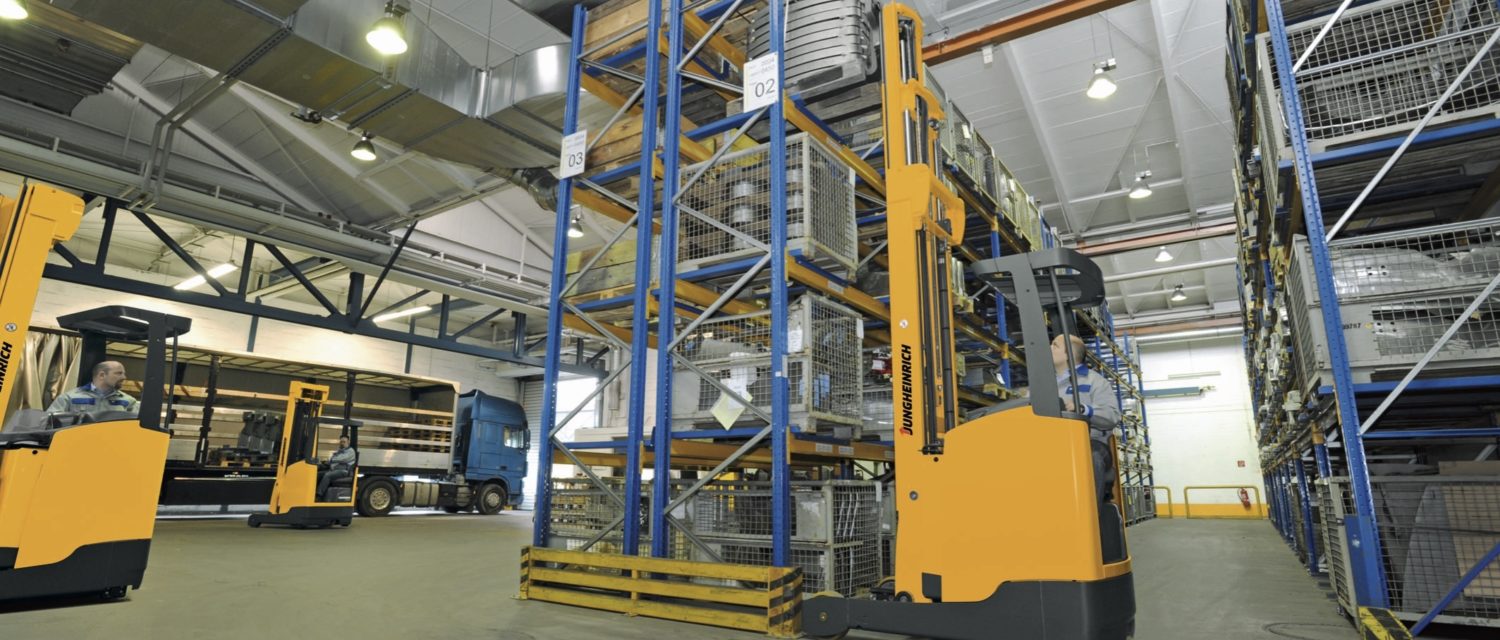Pallet Racking Height: Factors to Consider

If your warehouse is like many others, you are trying to fit more inventory into a static space. In the face of increasing warehouse rental rates, moving is not always feasible, while spending millions to build a new warehouse is also often unrealistic for cash-strapped businesses.
When faced with the need to store more items in the same space, you may want to look up. Taking advantage of your vertical storage space can help you to fit more inventory into your warehouse without impacting efficiency in picking orders. You just need the right pallet racking to make vertical storage possible.
When choosing this pallet racking, the biggest factor to consider is how high it needs to be. Typically, pallet racking can be stacked in tiers consisting of upright posts and shelving beams. The number of stacks you need depends on a number of different factors, all of which you will need to consider before purchasing your pallet racking.
[CUTOFF]Consider the height of your ceilings when choosing pallet racking.
The, perhaps obvious, first step in choosing pallet racking is to consider the height of your warehouse ceilings. For example, if you have 15-foot ceilings, you won’t be able to purchase 16-foot pallet racking, while 16 feet of racking might be ideal for 20-foot ceilings.
Make sure you know exactly how high your ceilings go in every place where you want to expand your storage vertically. The ceiling height may vary within the warehouse, particularly if your building has a sloped roof or unusual angles. Once you know how high your ceilings are, you can more accurately evaluate the other factors that will also affect the height of the pallet racking you choose.
Consider the reach of your forklifts when choosing pallet racking.
It will do you no good to store inventory vertically if your reach trucks cannot access it. To that end, evaluate how high your forklifts can reach before you buy pallet racking. If they cannot reach as high as you want to store inventory, you will either need to reconsider your warehouse layout, or you will need to invest in new equipment.
If it is the latter, consider the cost of buying new equipment as part of the cost of purchasing and installing new pallet racking. You may find that the expense of purchasing new reach trucks makes the purchase of pallet racking more expensive than finding other storage solutions for your warehouse. Make sure that the cost savings you realize from vertical storage will outweigh the costs of purchasing new forklifts.
Consider fire codes when choosing pallet racking.
Another consideration when choosing pallet racking for vertical storage in your warehouse is the existence of fire codes. For example, you cannot impede the operation of sprinklers or smoke detectors. That means that any pallet racking around your sprinklers may have to give the sprinklers a certain amount of clearance.
Know what sprinklers or smoke detectors are near where you want to extend your vertical storage. Then, determine how much clearance is required by your fire codes, and subtract that number from your total available ceiling height.
For example, OSHA requires an 18-inch clearance for sprinkler heads. If you have a 20-foot ceiling, you may only have 18.5 feet to work with around your sprinkler heads. Of course, you should always consult with your fire marshal to determine the exact regulations that apply to you and your specific warehouse situation.
Consider beam height when choosing pallet racking.
Pallet racking consists of two main parts: The uprights and the racks that sit on them. The racks, or beams, on which your pallets sit, will have a height of their own. For example, many of these beams are 5 inches tall. If you have four beams stacked on your pallet racking, you will have almost 2 feet of space occupied by beams.
You will need to take this height into consideration when determining how much pallet racking to purchase. In particular, you would need to add 5 inches to the height of your pallets for every tier of pallet racking you plan to purchase.
Consider pallet sizes when choosing pallet racking.
Another factor that will affect which pallet racking, and how many tiers of racking, you purchase will be the size of your pallets. Most pallets today are GMA pallets of 48′ x 40′. However, some items may be stored on pallets of different shapes and sizes. Knowing the height of your pallets can help you determine how many tiers you need. The shorter your pallets, the more pallet racking tiers you can purchase.
Leave room for the forklift to work when choosing pallet racking.
Finally, you should leave room for your forklift to get into the pallet racking and lift the pallets in and out. A few inches should be enough room. One rule of thumb is to leave 10 inches per tier to account for both the height of the beam and the room needed to move the pallets in and out of the pallet racking.
Here is an example of how to determine how much pallet racking to buy. Say you are using GMA pallets that are 4 feet high and beams that are 5 inches high. For every tier of pallet racking you purchase, you will need to allow for 4 feet of space between beams, plus 5 inches of height for every beam and perhaps another 5 inches for the forklift to get in and out. That means that every tier you purchase is equivalent to 58 inches of height.
Choosing the right type and amount of pallet racking may feel hard at first, but it becomes easier when you have the help of an experienced professional. Here at Darr Equipment, we offer you guidance in choosing the right pallet racking for your needs, as well as a wide variety of warehouse storage solutions so you can always find what you need.
